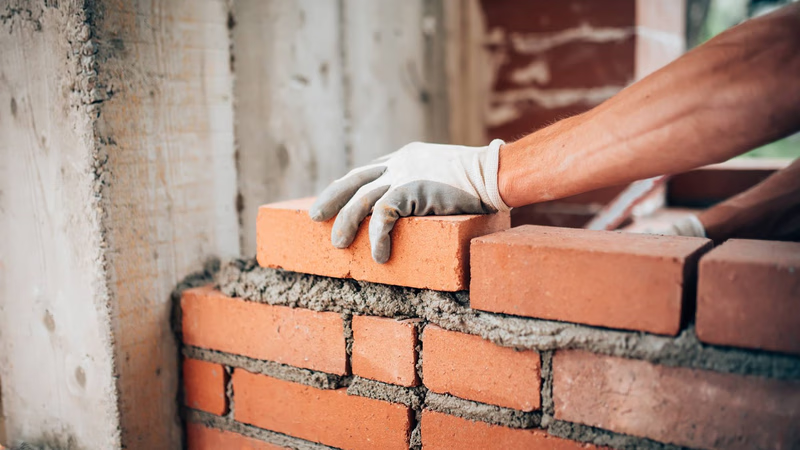
Ancient bricks showcase durability in Middle Eastern architecture.
The earliest known bricks were made around 7000 BC in the region of modern-day Turkey and the Middle East. These early bricks were made of sun-dried mud or clay and were used to construct simple structures like houses and walls. Bricks played a significant role in the architecture of ancient Mesopotamia (present-day Iraq and parts of Syria, Iran, and Turkey). The Mesopotamians developed new techniques for brick manufacturing, including kiln firing, which produced stronger and more durable bricks. The ancient city of Babylon is renowned for its impressive brick structures, such as the Ishtar Gate.
Brick usage declined during the Middle Ages in favor of stone and timber construction. However, bricks experienced a revival during the Renaissance. In particular, the Netherlands and Flemish regions became renowned for their brick architecture, characterized by intricate brickwork and decorative patterns. The Industrial Revolution in the 18th and 19th centuries brought significant advancements in brick production. The introduction of steam-powered brick-making machines and mechanized kilns revolutionized the manufacturing process, leading to increased production and standardization of brick sizes.
In the history of bricks, at least the age of bricks goes back to more than 5000 years ago, the first bricks that were produced were made of clay and straw, which were poured into rectangular molds and left to dry. Brick in Iran is very old. The production and use of bricks actually became popular from Western Asia, then it was transferred to Egypt, India and other parts of the world. In Iran, archeologists have observed the remains of brick kilns dating back more than 6000 years around Shush and Silk Kashan hills.
Brick is one of the oldest, most durable and widely used building materials. From the past several centuries until today, due to its durability and high resistance, brick has been used in the construction of many structures. Brick production also has a special process. The reason for the high durability of the brick is that it is fired in a 2000 degree furnace. Many early forms of brick were unburnt bricks that were naturally dried by sunlight and were also known as sun-dried bricks. Usually these bricks have less resistance. So they are not used in modern construction and civil engineering. Bricks are produced from different materials and for different purposes. In the following, we will examine the methods of brick production together.
The ancient Egyptians also utilized bricks extensively in their construction projects. They employed a technique called \"mud brick\" or \"adobe\" construction, where bricks made of mud and straw were dried in the sun. These bricks were used for building houses, temples, and tombs, including the iconic pyramids. The Romans made significant advancements in brick manufacturing techniques. They introduced the concept of using mortar as a bonding agent between bricks, which enhanced the structural stability of their buildings. Roman bricks were typically made of clay and were larger in size than earlier bricks. The use of bricks proliferated throughout the Roman Empire, leading to the construction of numerous impressive structures, such as the Colosseum and the Baths of Caracalla.
In modern times, bricks continue to be a widely used construction material, although they have been supplemented and sometimes replaced by other materials such as concrete blocks and steel frames. However, bricks remain popular for their durability, thermal properties, and aesthetic appeal. Bricks made of clay have been used for at least 5,000 years. Apparently, for the first time, it was used to build cities in the Mesopotamia and the Indus Valley in Pakistan. At first, people mixed clay and straw by kicking them to make bricks. Then the prepared mixture was poured into rectangular molds and dried in the sun.
-

Bricks are rectangular blocks used in construction, made primarily from clay or shale. They are known for their durability, thermal insulation, and fire resistance. Various types of bricks exist, including clay, concrete, and fire bricks, each suited for different applications. The brick production process involves mining raw materials, molding them into shape, drying, and firing in kilns to achieve hardness. Despite the rise of alternative materials like concrete blocks and steel frames, bricks remain popular due to their cost-effectiveness and aesthetic appeal. They are widely used in residential and commercial construction for walls, pavements, and decorative elements. Bricks offer advantages such as long lifespan and minimal maintenance but can be heavy and labor-intensive to install. Their versatility allows for various architectural styles while providing good acoustic insulation.
The standard size of a brick varies globally but typically measures around 9 inches long by 4. 5 inches wide by 3 inches thick. Overall, bricks continue to be a fundamental building material with a rich history in construction.
-
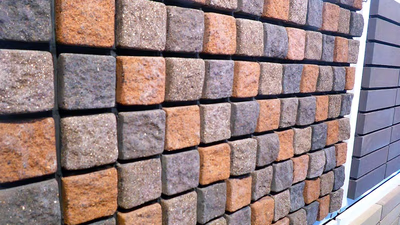
Clay bricks dominate the market due to their versatility and various manufacturing processes. They can be categorized into several types, including dry-pressed, extruded, wire-cut, concrete, sand-lime, perforated, and special-shaped bricks. Each type has unique properties suited for different applications. For instance, dry-pressed bricks offer a smooth texture while extruded bricks are lightweight with improved insulation. Concrete bricks provide higher strength for structural uses, whereas sand-lime bricks excel in moisture resistance. Perforated bricks enhance ventilation and are ideal for damp areas. Special-shaped bricks cater to specific architectural needs. Additionally, bricks can be classified based on quality (first, second, third grade), production methods (extruded, pressed, handmade), materials (clay, shale, concrete), usage (built-in or exposed), application (ordinary or engineering), and appearance (hollow or beveled).
Engineering bricks are particularly strong and suitable for demanding environments like basements and manholes. Fireproof or refractory bricks withstand high temperatures and are essential in fireplaces and kilns. The diversity in brick types allows for a wide range of design possibilities in construction.
-
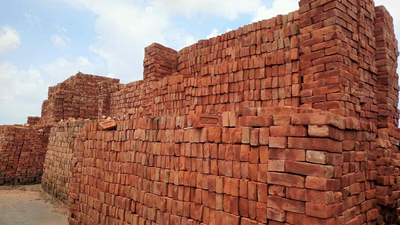
The production of bricks involves several critical steps that influence their quality and price. The process begins with the extraction of raw materials, primarily clay, which is then prepared by removing impurities and adding iron oxide for color. The clay is mixed with water to create a moldable consistency before being shaped through traditional or machine methods. Drying follows, where moisture is gradually removed to prevent cracking. Finally, the bricks are baked in kilns at high temperatures, allowing for crystallization and hardening. Variations in the process can lead to different types of bricks, including glazed options that require an additional surface treatment. Each stage of brick production is essential for ensuring durability and aesthetic appeal, making it crucial for manufacturers to adhere to best practices.
-
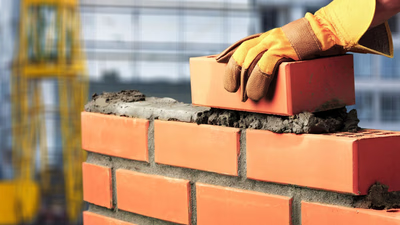
Bricks are a fundamental building material used in various construction applications, including residential and commercial structures. They provide essential structural strength, stability, and durability for load-bearing and non-load-bearing walls, pavements, and retaining walls. Their versatility allows for the creation of architectural features like arches and decorative elements, enhancing the aesthetic appeal of buildings. Bricks are also crucial in the restoration of historic structures, ensuring that renovations maintain original character. In landscaping, bricks define spaces through raised beds and garden walls while adding elegance to outdoor areas. Additionally, bricks serve as a medium for artistic expression in installations and sculptures. Despite a shift towards metal or concrete skeletons in modern multi-story buildings, bricks remain popular for facades and other applications due to their durability and thermal properties. They are particularly valued in constructing fireplaces, chimneys, industrial structures, boundary walls, and fences due to their fire resistance and insulation capabilities. The ongoing interest in brick usage reflects its importance within the construction industry.
-

Bricks have a rich history dating back to around 7000 BC in modern-day Turkey and the Middle East. Initially made from sun-dried mud or clay, these early bricks were essential for constructing simple structures. The Mesopotamians advanced brick manufacturing techniques, introducing kiln firing to create stronger bricks, exemplified by the iconic Ishtar Gate in Babylon. Although brick usage declined during the Middle Ages, it saw a revival during the Renaissance, particularly in the Netherlands. The Industrial Revolution further transformed brick production with steam-powered machines and mechanized kilns, leading to standardized sizes and increased output. In Iran, archaeological evidence shows brick kilns dating back over 6000 years. Ancient Egyptians also utilized mud bricks extensively for their monumental constructions, including pyramids. The Romans innovated by using mortar as a bonding agent, enhancing structural stability and leading to widespread use across their empire. Today, while modern materials like concrete and steel have emerged, bricks remain popular due to their durability and aesthetic qualities.
-
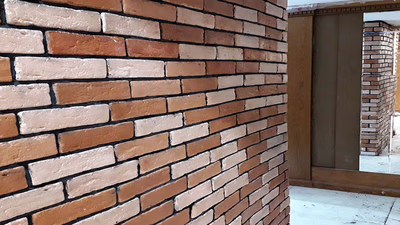
Brick is an environmentally friendly, inorganic material that excels in construction due to its moisture absorption and noise insulation properties. Its energy efficiency is notable, as refractory bricks help maintain indoor temperatures, reducing energy waste. The durability of brick ensures minimal maintenance, as it retains its aesthetic appeal over time without special care. Resistant to deformation from temperature changes and pressure, bricks are suitable for various architectural designs and can support buildings over eight stories. Their fire-resistant nature enhances safety by preventing the spread of flames and toxic gases. Additionally, bricks are versatile in design, available in various colors and styles that cater to different tastes. They can be easily recycled and reused, contributing to sustainability in construction. Overall, the combination of beauty, functionality, and longevity makes brick a preferred choice for modern building facades.






